Gleaming diyas, glittering lamps, colorful rangoli, succulent sweets, firecrackers and likes – these all make a composite picture of extravagant Diwali celebration in urban India. But, you will find absolutely different pictures of the festival in the rural backwaters of the country where tribal communities live. Indian Eagle explores the rural interiors of India to collect the striking glimpses of Diwali celebration by the tribal people whose multi-ethnic identity and culture are distinctly defined in contrast to the harmony of various cultures in a cosmopolitan society. Lets see how tribal India celebrates the Festival of Lights…
Diwali celebration is synonymous with simplicity for the tribal communities of Jharkhand. They celebrate the festival of lights, known as “Sohrai”, in a more realistic way associated with the means of sustenance in daily life. This festive occasion marks the harvest of rice, and the worship of cattle is part of the celebration in the tribal villages of the state. Harvest and cattle are the main sources of livelihood for them. The women in countryside decorate the mud walls of their houses (mainly huts) with art murals, which is unique to their culture. Also, domestic animals are adorned for the celebration.
The way of Diwali celebration in the state of Odisha is different from the ways the other states of India celebrate the festival in. The tribal folks of Odisha, on the occasion of Diwali, seek the blessings of their ancestors who are believed to be living somewhere in the heaven after the demise of their mortal bodies on earth. The ritualistic manner of worshiping ancestors is unique to their cultural heritage. “Kaunria Kathi” is one of the rituals that they perform during the festivity. As per the ritual, they burn jute stems to create fire as a signal to summon the ancestors and request for their blessings.
Also Check: India Owes Its Safety to These Military Villages
The people of the Sindhi community in the states of India have developed their own way of Diwali celebration, which is unique to their cultural identity in the social fabric of the country. This regional community of India refers to the celebration of Diwali as “Diyari”. Like most of the other communities, they worship Goddess Lakshmi. They clean silver and gold coins using raw milk during the worship. Once the puja is over, they take gold or silver coins and tap the coins lightly against their teeth while chanting “Lakshmi aayi, danat vaai” (When Lakshmi arrives, poverty departs).
The way the tribal communities in Narmada and Baruch districts of Gujarat celebrate defines their traditions in contrast to the common socio-cultural milieu of the country. The tribal people of these two provinces in Gujarat celebrate the festival of lights as a harbinger of good health. It is a 15-day long festivity for them. Unlike firing of crackers in cities and towns, the burning of herbal wood of different types accompanies the celebration for the tribal folks. The smoke from the burning of herbal wood is believed to keep them healthy. This traditional custom also stands for the philosophy, that is, “hard work brings wealth, and good health is required for hard work.” They light a holy fire and march a procession to take the fire across the villages in a bid to prevent evils from intruding their habitats. They enjoy themselves over various folk dance forms on each of the 15 days of the celebration.
Also Check: Inspiring Stories of Toilet in Rural India
The tribal habitants in Bastar district of Chhattisgarh are distinctly identified for their different way of Diwali celebration, known as Diyari. The festivity begins ceremoniously with the marriage of crop in fields with an idol of Lord Narayana. It is followed by the ritual of filling households with food grain. The cattle owners in the tribal community of Bastar are honored with liquor on the first day of the celebration. They offer garlands, paddy and khichdi, a kind of porridge with local flavor, to the shepherds. They perform Gotton puja, another integral part of the festivity, to seek divine blessings for the good health and protection of their cattle. The cattle are adorned with garlands, the drums are beaten, and the crop is worshiped as image of Goddess Lakshmi during the 3-day long Diwali celebration.
Thakar is one of the scheduled tribes inhabiting the forest areas of Maharashtra. Their cultural heritage includes various folk dance forms and songs. The way they celebrate Diwali festival stands for their identity in distinction from that of the other tribes in India. They make lamps from the dried parts of a fruit called chibra, and use the stands made from cow-dung to place lamps on. They worship the grain, stored in a cane basket, as the image of Goddess Lakshmi, on the festive day. On this occasion, they perform a folk dance in rhythm with the beats of dhols.
About Travel Beats
This story is brought to you as part of the initiative, “Explore India with Indian Eagle”, aiming to promote what is good and lesser known about India through our overseas Indian community portal, Travel Beats. Travel Beats is a subsidiary of Indian Eagle Travel, a leading air ticketing partner of Indians abroad.

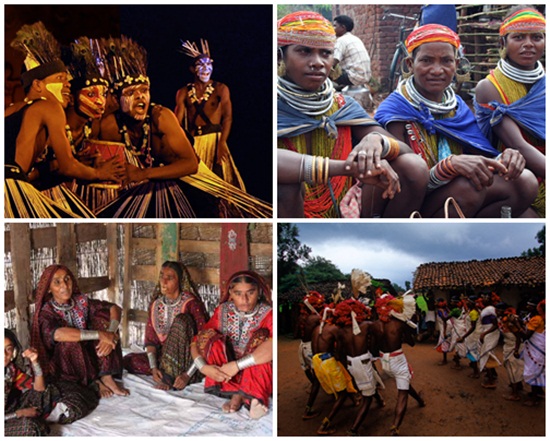

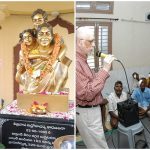
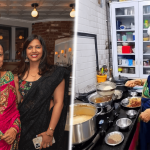
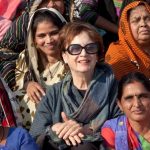
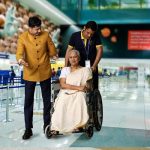



Here everything has been described in systematic manner so that reader could get maximum information and learn many things.